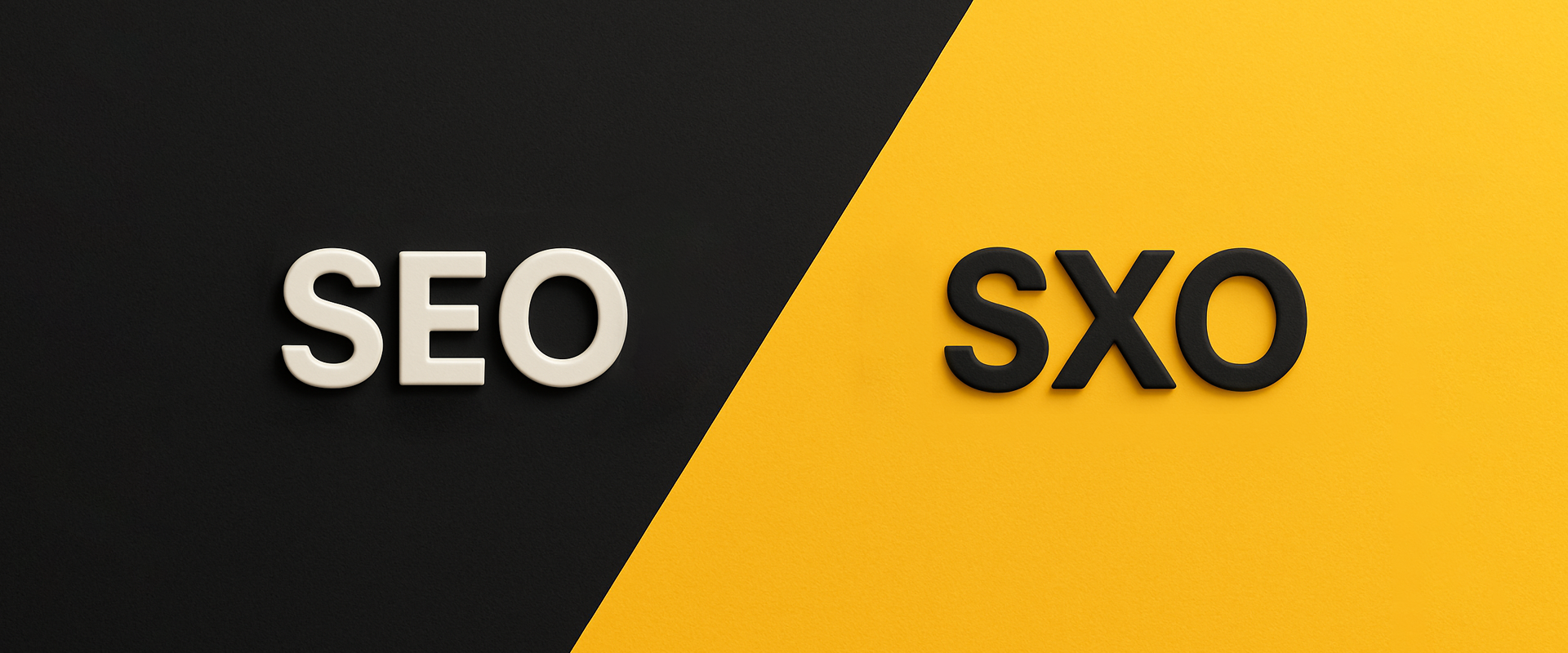Search is no longer a traffic game. All brands are still going after rankings, yet rankings don’t equal trust, action, or loyalty. Getting visitors for nothing if the experience that led to them is disappointing. That’s where SXO enters not as a strategy but as a mindset change.
It connects what users are looking for with how they feel when they get there. Each click is a chance to show relevance, reduce friction, and steer action. To prevail today, brands need to be chosen and that starts with experience.
From Search Optimization to Experience Optimization
Search engines now don’t rank pages that simply manage technically. They prefer intent, velocity, simplicity, and value delivered in real time. Ranking is still a goal, but no longer the ultimate aim. More critical is the success of the page in meeting expectations once the user has arrived.
SXO responds with answers that bridge the gap between search intent and on-page experience. It marries SEO, UX design, and behavior understanding to remove friction and create flow. Instead of merely ranking, brands begin delivering experiences that are purposeful, relevant, and complete. That’s what search engines rank for—and that users remember.
What Sets SXO Apart
SEO is discovery and welcoming people in, but getting found is only the beginning. SXO builds on that by shaping the entire interaction—what users see, how they respond, and whether they move forward. It turns a visit into a decision.
This approach brings together content structure, interface clarity, and behavioral cues to guide action without confusion. It helps users grasp the purpose of the page quickly and take the next step with confidence. That is how intent becomes engagement, and engagement becomes conversion.
Teams that apply SXO still value keywords, but they focus more on how those keywords influence the experience through microinteractions, layout clarity, and guided actions.
The goal is not just to generate traffic, it’s to deliver outcomes through experience-led design, and that’s what a UX-driven agency should deliver.
The Business Case for SXO
Visibility alone does not build outcomes. A user can land on your site, scan a few lines, and leave without a second thought. That time lapses, and with it, opportunity. SXO disallows that by aligning anticipation with experience. It makes certain what users find is exactly what they were seeking—unencumbered, pertinent, and intended to move them forward.
If the experience is optimized just right, bounce rate goes down, time on site gets better, and conversion journeys are disclosed. Brands that invest in SXO do more than send traffic. They build journeys that build trust and bring real results.
How to Start Thinking in SXO
Coming to SXO starts with seeing your page through the eyes of a new visitor. Are they able to grasp what the page is about in seconds? Is the next thing they need to do obvious? Does the content support their purpose or work against it? When structure, language, and purpose come together, individuals move forward confidently.
Analytics, behavior trends and direct feedback can reveal frictions and patterns of successful journeys. The focus shifts from chasin’ traffic and trying to build clarity, momentum, and trust. SXO takes optimisation less of an educated guess and more of an operation of precision.
When SEO and UX Align, Results Follow
SXO is strongest when purpose and performance converge. It’s not necessarily about quicker pages or more elegant code—it’s about how those optimizations make it possible for people to do what they came to do. The future becomes clear when intent drives the structure and design cuts through hesitation. Content feels fresh, navigation is smooth, and calls to action appear when users are ready, not earlier.
This alignment creates traction. Better experiences translate to increased engagement, which boosts the signals that search engines want to favor. In turn, that brings in more qualified traffic and reinforces what works. The result is a system that grows by delivering real value—not just rankings.
Optimization Does Not Stop at the Search Result
Strong SXO begins where traditional SEO ends. It is not enough to attract clicks; the experience that follows has to earn attention, build trust, and move users forward. That means every detail, from speed to structure to content clarity, must support a clear path. Users engage without hesitation when intent and design work together.
This kind of alignment builds more than momentum. It creates a system that improves itself. Better experiences increase engagement, boost search signals, and attract higher-quality traffic over time. That is how modern websites perform—by turning visibility into action and intent into outcomes.
If that is what you want for your brand, we’re here to help. Contact our team and let’s create a digital experience that actually performs.
